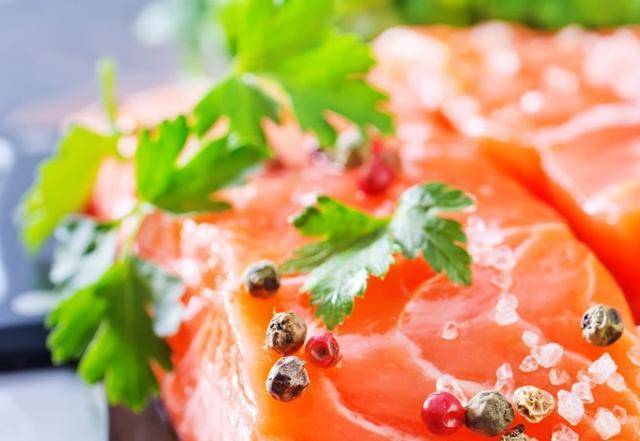With the continuous improvement of people’s living standards, the food on the table has become richer. Overindulging in high-calorie and high-fat foods without exercising afterwards can easily lead to high blood lipids. Once afflicted with this disease, it can increase the incidence of cardiovascular and cerebrovascular diseases, impacting the body to some extent and even threatening life. Therefore, for patients with high blood lipids, following these 6 items in daily diet can make the blood lipids behave more obediently.
1. Salmon
Salmon contains some rich unsaturated fatty acids. Proper intake not only lowers the triglyceride levels in the blood but also cleans up the “junk” inside the blood vessels, thereby enhancing the elasticity of the blood vessel walls. Consuming at least 400 grams of salmon per week, persisting for 3 months, has a certain improvement effect on high blood lipids. The Omega-3 unsaturated fatty acids in salmon also have a certain preventive effect on cardiovascular diseases.
2. Hawthorn
Hawthorn contains bioflavonoids and rich vitamin C, which can not only dilate blood vessel walls but also have a certain reducing effect on cholesterol and triglycerides. Drinking a cup of hawthorn tea daily can have a certain control effect on high blood lipids. However, hawthorn has a high citric acid content. Patients with poor stomach conditions should not consume excessive amounts, as it may cause stomach acidity.
3. Onion
Patients with high blood lipids are more suitable to eat onions. It can be fried, stir-fried, or used in soups, such as onion salad, onion stir-fried with celery, which has a certain effect on lowering blood lipids. Onions contain dietary fiber, vitamin B, vitamin C, iron, phosphorus, etc., which also have certain benefits for preventing atherosclerosis.
4. Buckwheat Tea
Buckwheat tea contains flavonoids that not only have a certain maintenance effect on the normal permeability and brittleness of blood vessel walls but also can soften blood vessels and lower blood lipids. In addition, the vitamin E it contains has a certain antioxidant effect, inhibiting and eliminating excess free radicals, activating macrophages, and thereby reducing high blood lipids.
5. Cucumber
Cucumber is a vegetable that people favor. It contains rich protein, B vitamins, and other trace elements, as well as a large amount of dietary fiber. This helps in excreting food residues from the intestines, thereby reducing cholesterol absorption. Eating raw cucumbers is beneficial for preventing and treating hyperlipidemia and coronary heart disease.
6. Soybeans
Soybeans not only contain abundant proteins, twice as much as wheat or rice, but also essential amino acids, unsaturated fatty acids, and vitamin E. Consuming soybeans can lower the cholesterol content in the bloodstream.


